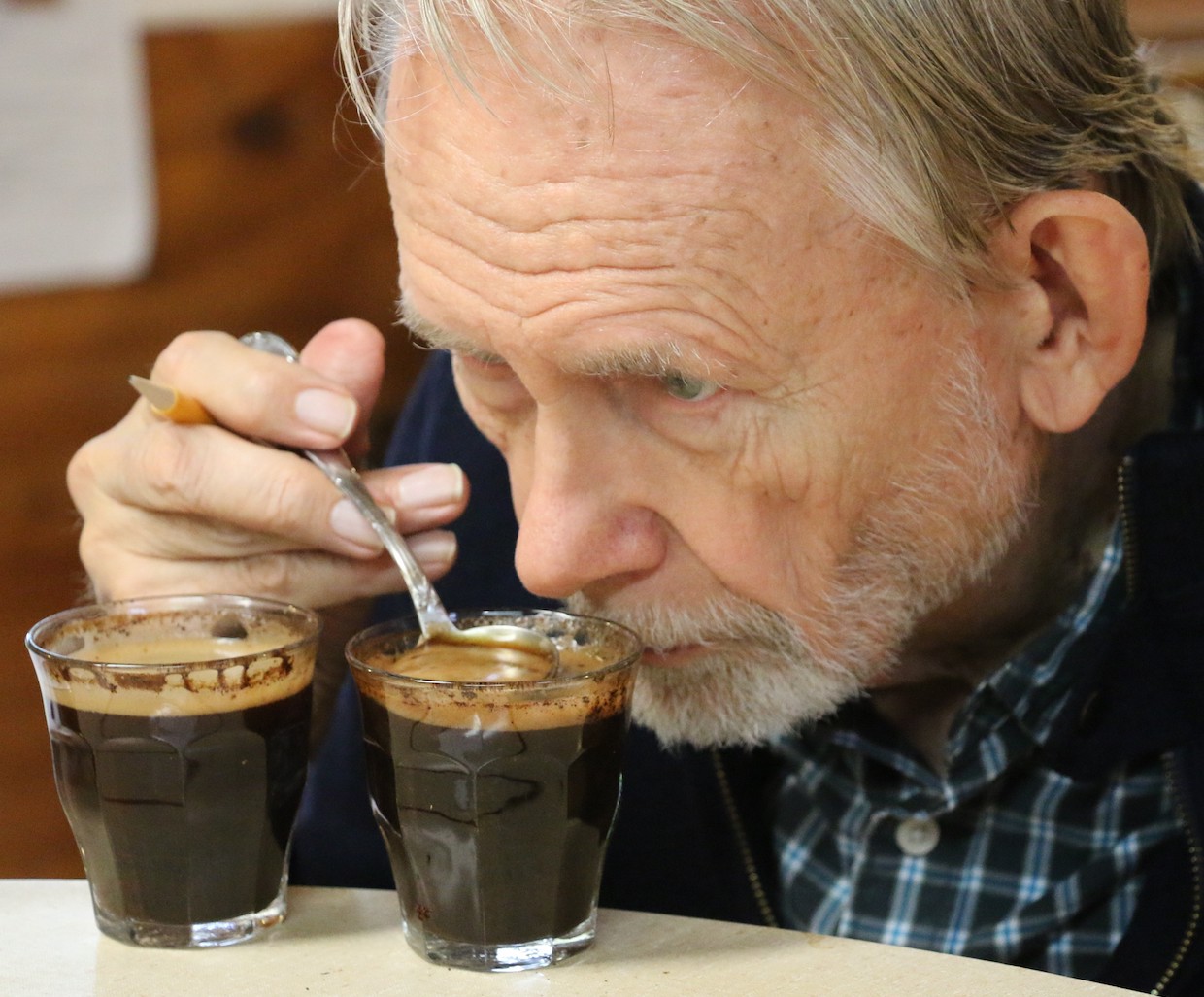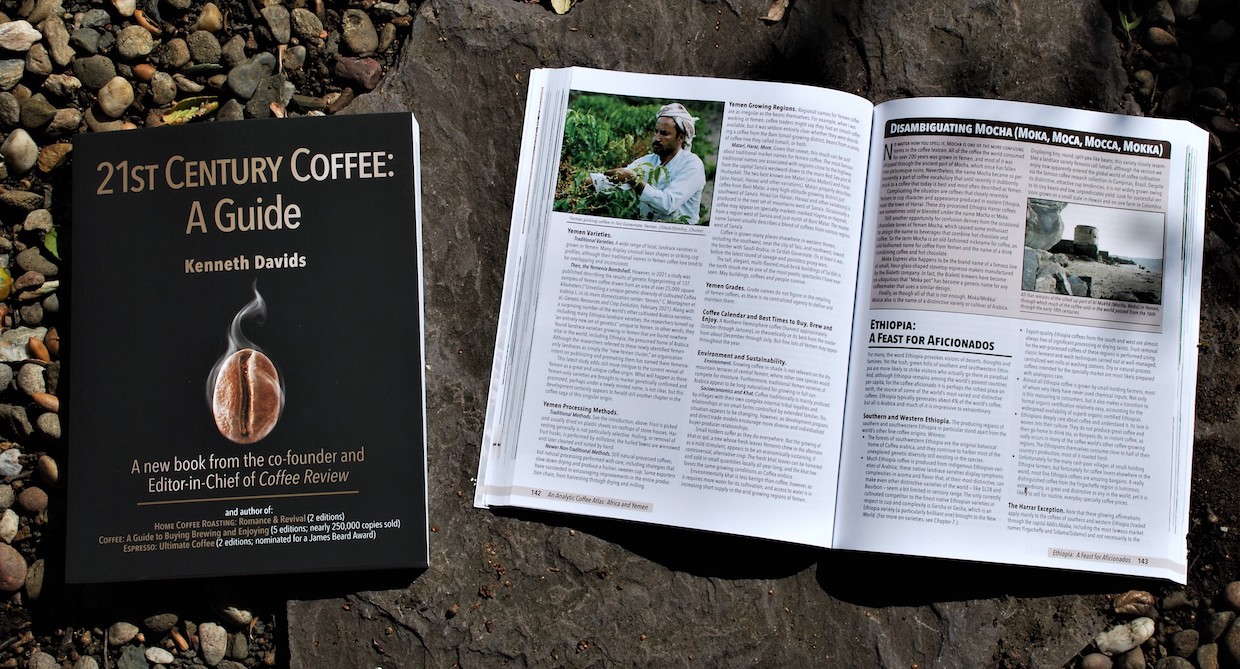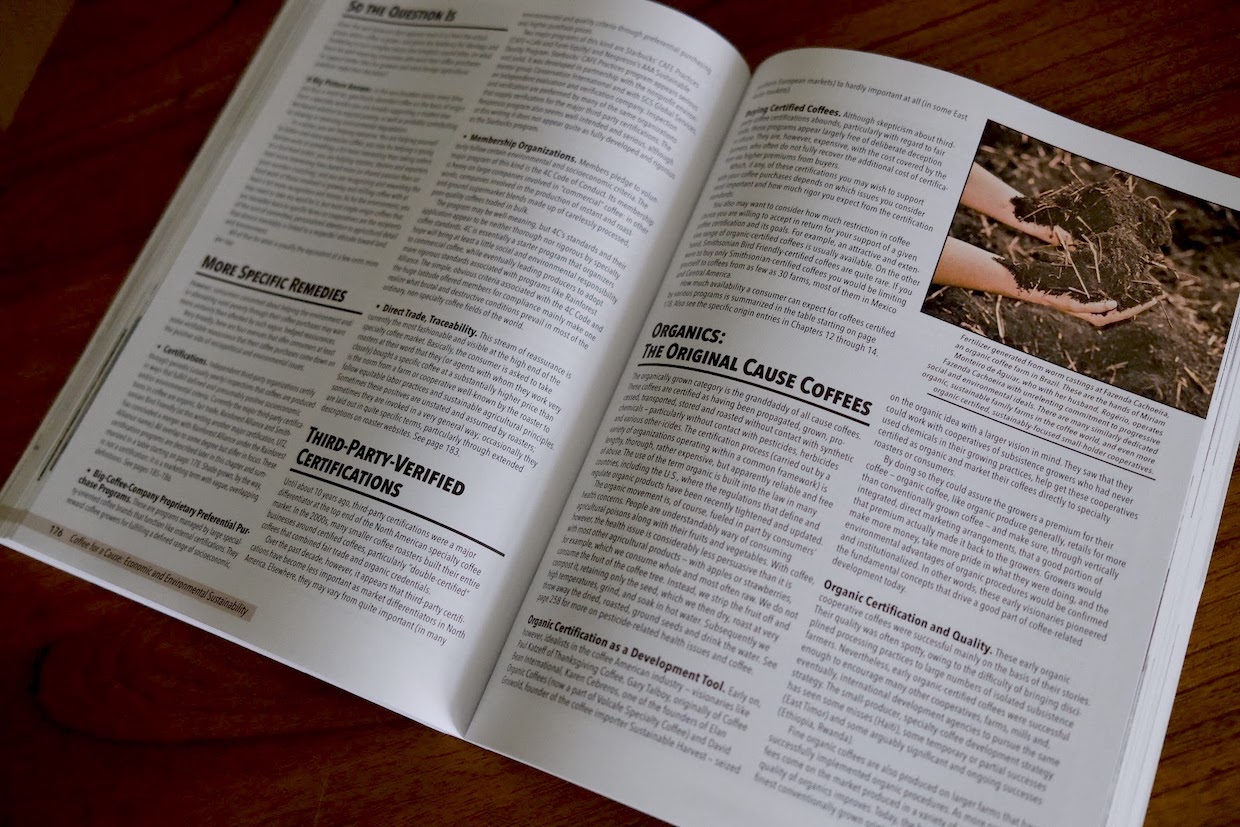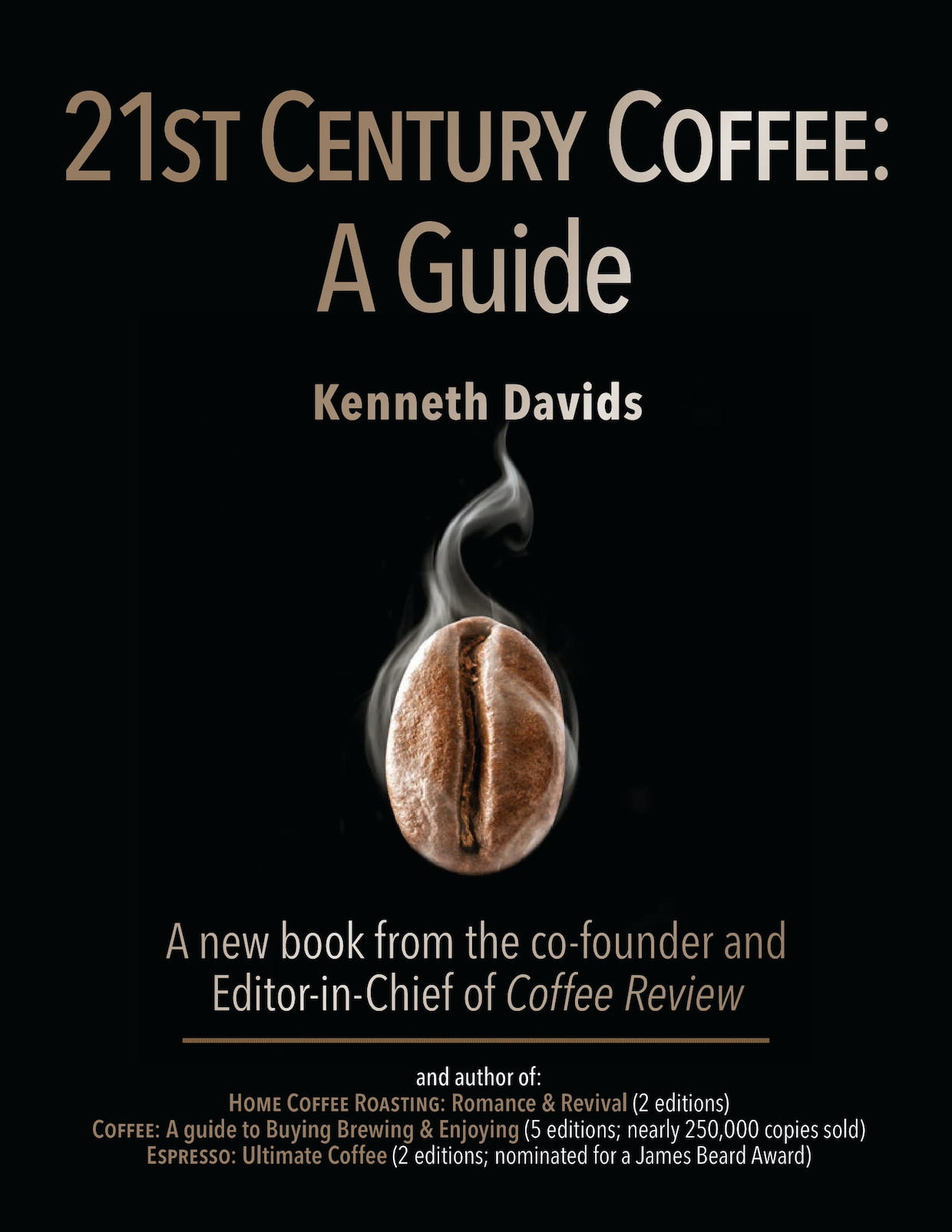It’s been 46 years since Kenneth Davids first published Coffee: A Guide to Buying, Brewing & Enjoying, a book that launched at the dawn of the specialty coffee movement and has lived alongside it through five subsequent revisions.
Much has changed in coffee since 1976, yet Davids has retained a leading voice in the industry through speaking engagements, numerous other books through New York’s St. Martin’s Press and the pioneering coffee review site he co-founded in 1997, Coffee Review.
A key component to Davids’ longevity may be his ability to clearly and succinctly illuminate the myriad complexities of coffee through a historical perspective while avoiding a full-bodied embrace of the industry’s many fleeting trends.
Davids, who is based in Berkeley, California, recently published his most ambitious book to date, 21st Century Coffee: A Guide. Spanning 290 large-format pages and including 190 photographs and more 50 maps and infographics, the book serves as a comprehensive introduction to the infinitely expansive world of coffee, while also tackling head-on some of the coffee industry’s biggest changes and most pressing challenges over the past two decades.
We recently reached out to Davids to discuss 21st Century Coffee in more detail.
(Note that answers may have been shortened for clarity or readability. Also, before we get into it, United States-based readers can find the book through Davids’ own website, kennethdavidscoffee.com, Amazon or other specialty coffee sites. International readers may find the book at biblio.com using the complete title.)
Daily Coffee News: Can you tell us more about how long you’ve been working on this project, and your decision to self-publish?
Kenneth Davids: St. Martin’s Press in New York published my other three books on coffee. The editor there had been pressing me for some years to do a sixth edition of my first book, Coffee: A Guide to Buying, Brewing and Enjoying. But when I considered the recent explosion of change in specialty coffee, I couldn’t imagine that a simple, boxy rewrite of the old book in black and white could do the job of representing the current richness of the specialty coffee world and all of its changes and complexities.
So, I decided to create the book I wanted without compromise by essentially publishing it myself with the support of some roaster and importer friends. It took five years. My goal was to put everything about specialty coffee into it: the traditions, the recent history, the latest astonishing and accelerating changes, including the many changes in origin countries, the daunting environmental and social challenges. I wanted to make it a definitively complete book, an authoritative book, but not a boring one. I try to engage the reader in overlapping ways: text, tables, photos, maps.
The addition of so many more graphic elements creates more of a “textbook” feel. Was that an intentional decision, and can you envision this book being used in the growing field of formalized coffee education?
I don’t like the term “textbook,” which connotes dutiful boredom to me. But do I think 21st Century Coffee could make a good, sound, balanced textbook for a serious introductory course on coffee. To me the jostle of graphic and text elements gives the book energy and versatility.
As you mention in the intro, one of the goals is to peel through the “marketing hoo ha” surrounding coffee, of which there is a considerable amount. As you’ve watched trends and movements within the coffee industry come and go over the years, how would you characterize the marketing of coffee in 2022?
We started Coffee Review on the principle that we would do our best to describe what we actually tasted and not what we were supposed to taste based on fads and coffee truisms. I carried that attitude into the book. Nevertheless, when I browse through the websites of smaller specialty roasters today, I find that they are genuine in their communication. They may be selling, but they are actually tasting what they are selling.
What hired publicists do is something else. They do what they can for their clients based on what they learned in marketing school, but they don’t belong to the world they are trying to influence, the living world of coffee, so their communications often come out sounding empty and false.
The book touches on nearly every conceivable aspect of the seed-to-cup chain, but how did you determine what to exclude? Where are those broader lines drawn?
I tried to put in what I felt was important for an interested consumer or beginning professional to understand about the complexity of what is happening in coffee today, but avoided piling on detail. Above all, I gave priority to the sensory evidence of the cup and the particular decisions and histories that go into creating it.
Some sections of the book are more detailed than others. The tasting chapters, for example, are aimed at demystifying tasting for consumers and encouraging them to enter the dialogue about what makes a given coffee great or distinctive in the cup. That required some detail. The brewing chapter also had to be hands-on, even though most readers probably start with a lot of knowledge about brewing. Elsewhere I was less hands-on, less palates-on.
For example, I tried to explain specifically and in detail how processing, tree variety, origin histories and roasting all contribute to what one encounters in the cup, but I didn’t try to turn readers into coffee growers or processors or roasters.
Who is the reader of this book?
I think of this book as a friendly, reliable companion and reference source for coffee people, whether consumers or professionals.
Have your experiences operating Coffee Review (particularly in terms of tasting and researching coffees) affected your perspective as a writer?
In George Howell’s generous forward to 21st Century Coffee he writes about the opportunity Coffee Review has given me to taste roasts “from the latest varieties and processes, from K-Cups to $1,000+ competition-winning coffees.” This is true. I could never have gotten access to thousands of the finest and rarest coffees in the world without Coffee Review. Nor would I have had the incentive to mindfully taste more mainstream products, like K-Cups or specialty instants, if I hadn’t felt compelled to review them. Finally, reviewing forces one to address the controversies of the coffee world via the evidence of the cup, rather than more generally or abstractly.
Comparisons between coffee and wine appear in this book and have appeared in your writings for decades… In your mind, how are such comparisons useful and what are some the ways in which coffee and wine might forever be disparate?
For me the world of wine constitutes coffee’s cultural and economic aspiration. Wine is where we want to be economically, a world where thousands of smaller producers bottle their own wines and sell them for decent prices to appreciative and respectful consumers. We want something similar for coffee — a complex, individualized world of producers and roasters selling to consumers who are willing to pay a bit more for better, more differentiated coffees. True, wine has its problems and controversies, but it sure beats coffee as an overall economic and cultural model for a beverage.
On the other hand, coffee is obviously more challenging technically than wine, and its pleasures are more precious because they are more vulnerable. In wine-making, everything creative happens at the vineyard and winery. By contrast, the supply chain for coffee is complex and collaborative, going from producer through exporter/importer through roaster, culminating in the consumer (or barista) who brews it. In comparison, all a wine-lover has to know is which wine to buy, and whether to put it in the basement for a while before drinking it.
This may be an odd question, but considering the fact that you’ve devoted such a monumental body of work to this subject, how do you feel about the coffee industry today?
Still excited — excited about what I can learn new about coffee and what coffee can learn new about itself. There are so many cross-currents and dynamics in the coffee world today. In coffee, we confront both the disgrace of the economic system, and its lies and coercions, interspersed with countless moments of connection, of knowledge and pleasure and generosity.
What’s next for you?
I’m revising my book Home Coffee Roasting: Romance & Revival for St. Martin’s Press. I am not going all-out and four-color on this one, however! I look at this revision as an opportunity to render some of what I learned while doing this big book in more contained and succinct form focused on a specific set of processes.
Three Questions with Kenneth Davids
What about coffee excites you most?
The complexity of its production as reflected in the cup.
What about coffee troubles you most?
The folks exploited at the production end of the supply chain.
What would you be doing if it weren’t for coffee?
Writing fiction nobody reads.
Nick Brown
Nick Brown is the editor of Daily Coffee News by Roast Magazine.











Comment